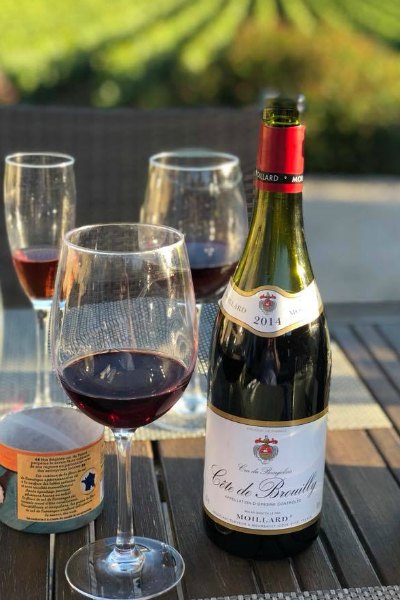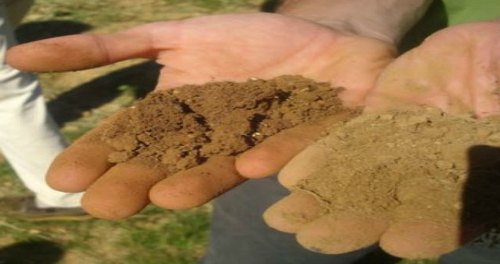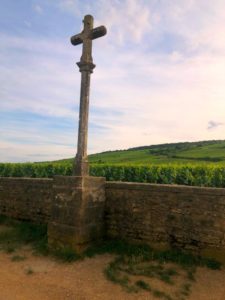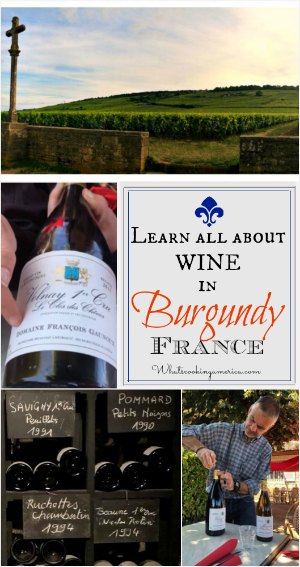Everything I Learned About Burgundy Wine
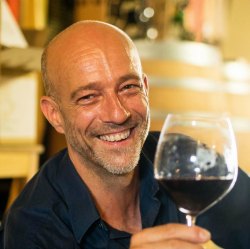 On my 2018 journey to the Burgundy region of France, I had the opportunity to spend time with grower, sommelier and wine consultant Pascal Wagner. Pascal is a Oneologist (expert in the science and study of wine and winemaking) with a passion for sharing the Burgundy region’s best wines. We learned so much about wine from Pascal that I’ll do my best to pass on to you all he taught us.
On my 2018 journey to the Burgundy region of France, I had the opportunity to spend time with grower, sommelier and wine consultant Pascal Wagner. Pascal is a Oneologist (expert in the science and study of wine and winemaking) with a passion for sharing the Burgundy region’s best wines. We learned so much about wine from Pascal that I’ll do my best to pass on to you all he taught us.
I do recommend that if you are planning a trip to Burgundy, look Pascal up and join one of his Burgundy Wine Experiences as he as all the “Ins” to some of the most exclusive wineries in the world.
What Time of The Day is the Best to Go Wine Tasting?
In the morning when you palate is clean, before you have coffee, smoke or eat a meal. You mouth is ready to experience the full flavor of the wine, and your head is clear, so you are able to denote the essence and flavor of the wine. This was relayed to me on our way to the winery, when I decided a morning mint was in order and passed them around in the car. Pascal quickly stopped me, (I thought maybe he would hit the car brake) telling me how much that can wreck the experience we were about to have. No food, no coffee not before you taste the wines.
Why do People Smell the Wine Cork?
It is important to smell the wine cork so you know if the wine is good. After opening the wine bottle, turn the cork end that was in the bottle up and to your nose. You should smell wine or nothing. If the cork smells like cork, must, or like a cellar, the wine is bad as it was not sealed properly and has become exposed to the air.
Learn How to Properly Taste Wine?
Contrary to what we have heard, the proper method for tasting wine is not to sip and swallow. Pascal explains, when you are exposed to liquid, such as a shower, or swimming, or drinking, your brain tells your nose to stop breathing, and reroutes the breath to the mouth. This function can block you from tasting your wine fully, as a part of tasting is smelling.
First, take a sip of your wine, do not slurp the wine through your lips into your mouth, instead, begin to chew the wine in your mouth, this opens your nose and fills your mouth with the full flavor.
Terroir of Burgundy – It’s All About The Land – Not the Grape
The secret to Burgundy wines is not in the grape, it is in the land. Burgundy wines consist of either white grapes or red grapes, but the quality and rating of the wine ultimately lies in the land that the grapes were grown. Burgundy has a special land composition referred to as Terroir. It is an interesting science better explained by the Beaune tourism Web site. Here they talk about the rating system and production of wine by rating.
Watch Pascal explain about the terroir of Burgundy
How Much Wine Will a Grape Vine Produce in Burgundy.
It depends on the vineyard, again, it’s about the quality of the land the grape is grown on not the quantity. In Burgundy wines are rated by the plot of land they are grown on known as the terroir. Wines are rated in the following way:
- Grand Cru: Makes up 2% of the wines produced in Burgundy. 1 acre = 10,000 vines = 3,000 to 4,000 bottles.
- Premier Cru: Makes up 10% of wine produced. 1 acre = 10,000 vines = 6,000 bottles
- Villages: Makes 30+%. 1 acre = 10,000 vines = 8,000 bottles
- Regionales: Makes up over 50% of wines produced. 1 acre = 10,000 vines = 10,000 bottles
What Temperature Should Wine Be Stored At?
Most people say room temperature is the proper temperature for your reds. Nowadays, most homes or business have central heating so that changes what the definition of room temperature might be. Back when homes didn’t have central heating, the average temperature in a home was 55 degrees F. When you go wine tasting the cellar is about 55 degrees F. for both reds and whites. That is the optimal “Room Temperature” that you should keep all your wine stored at.
Learn How to Read a French Wine Label
There are no pretty pictures, or fancy wine names in France, the label is all business, official and packed with information about the wine you are about to consume. Learn to decipher a French wine label from Lisa de Melogue of Pistou and Pastis Culinary Adventures.
Phylloxera Crosses and How America Helped Save French Wines
Driving through the Burgundy region we noted that there were many crosses spread throughout the vineyards. Curious, we found out an amazing story that I can tell you in a nutshell, but you can read more here. In the mid 1600’s a little bug came to visit the vineyards of France called Phylloxera. This creature was threatening the countryside. Growers, having exhausted many attempts to eradicate Phylloxera, turned to religion and began erecting crosses in the vineyards. The crosses were very basic to very elaborate but all were pleas to stop the blight that was moving through the land, wiping out the vines. The amazing part of this story is, the final answer to stop the Phylloxera, was to graft American vines onto the French roots. The American vines were resistant to the bug. When we drink French wine, we are actually drinking a collaboration wine between France and America.

